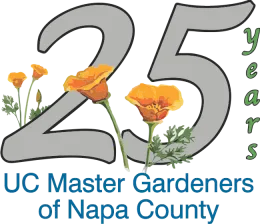
Having a rat invasion is a bit like having salmonella at the potluck – someone must be blamed. When I heard the telltale scrabbling under the floor, then later saw rat poop in the toolshed, I wondered – where did the rat come from? My neighbors to the west had renovated an old storage area, transforming it into a lovely postmodern home and possibly displacing a vermin population. Or how about my neighbor to the south, who has not set foot in his yard for the last twenty years? Rats love undisturbed vegetation. And there is the showplace garden to the north that is so stunningly well managed that a hungry rodent would have to come over to my place to avoid starvation. Not my fault, right?

This is probably a roof rat, or Rattus rattus, to distinguish it from its relative, Rattus norvegicus, or Norwegian rat (which actually came to Europe from China thousands of years ago). Both abound in North America. Roof rats have the longer tail. Wouldn't poisoning the rat be easier than trapping it? Probably, but most rat poison is actually an anticoagulant that doesn't do its work until some hours after the rat has ingested it. In the meantime, that rat could enter the food chain and be devoured by a house pet or, say, an owl or other benign form of wildlife, which would then die. Trapping is the environmentally sound choice, along with eliminating nesting places (see ivy, above). According to the Smithsonian, there is evidence that rats are developing a resistance to rat poison, so there is another reason for trapping.
I am going to keep checking the traps. Since rats can mate year round, have a gestation period of three weeks, and bear on average eight to a litter, a couple of rats can soon be a big problem. People who own terriers generally don't have rat issues. Some cats are good rat catchers, but it is better for house pets not to have contact with rats, because they can carry disease. Which reminds me – if you feed your pet outside, do not leave food out overnight. Rats love dog and cat kibble.
Information links:
Pest Notes: Rats, UC ANR Publication 74106
"Garden Pests – Here's A Little Help!" Napa Valley Register UCMG column, Iris Craig, July 22, 2018
Norway Rat – Smithsonian's Nation Zoo, nationalzoo.si.edu.animals.norway-rat
Master Gardeners are following recommended social distancing guidelines that keep everyone safe, Napa Master Gardeners are available to answer garden questions by email: mastergardeners@countyofnapa.org. or phone at 707-253-4143. Volunteers will get back to you after they research answers to your questions.
Visit our website: napamg.ucanr.edu to find answers to all of your horticultural questions.
Photo credits: Creative Commons CC0

